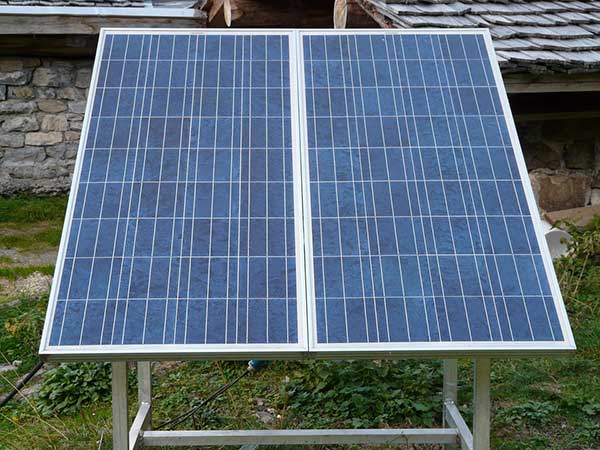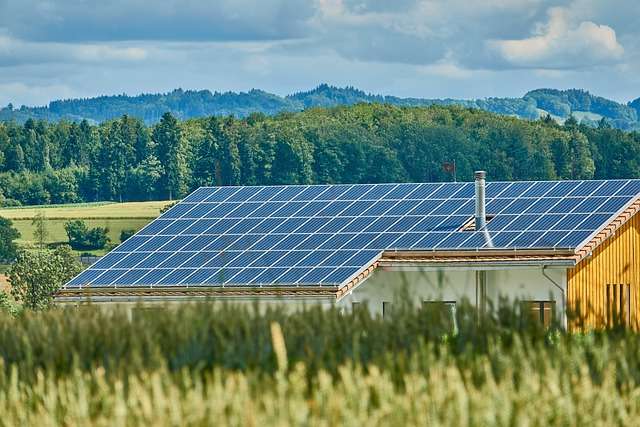How To boost Any Solar Panel Output By 75%

Make sure to like Living Green and Frugally on Facebook, Shop at Amazon to help support my site and explore our PINTEREST BOARDS for innovative ways you can become self-sufficient.
As renewable energy becomes a key solution for the future, solar power stands out as a sustainable way to generate electricity. Photovoltaic (PV) panels are designed to capture sunlight and convert it into clean energy. However, for many homeowners and businesses, a common question arises: How can you maximize the efficiency of your solar panels?
One innovative and effective way to boost your solar panel output is by incorporating glass mirror panels. In this guide, we’ll explain how using mirrors can increase solar panel output by up to 75%, and how to safely apply this method to enhance your solar energy system.
Why Use Glass Mirror Panels with Solar Panels?
By using glass mirror panels, you can reflect more sunlight onto the surface of your solar panels, which increases the energy they capture and convert. Here’s how it works:
- Increased sunlight: Mirrors direct additional sunlight onto the PV cells, intensifying the amount of energy the solar panels receive.
- Higher energy conversion: The increased sunlight helps solar panels convert more solar energy into electricity, resulting in a potential 30% boost in output.
DIY Projects: Using Broken Mirrors for an Extra Boost
For those who enjoy a DIY challenge, some enthusiasts have experimented with broken mirrors to further increase solar output. Here’s what you need to know:
- Potential for a 50% increase: Using broken mirrors in combination with standard solar panels has shown output increases of up to 50%.
- Caution on overheating: Be careful not to use too many mirrors, as too much concentrated sunlight can cause solar cells to overheat. Stick to one mirror per panel for a safe and effective boost.
- Best for hobbyists: This method is ideal for hobby projects or small-scale solar setups. If you need serious energy production, consider investing in additional panels rather than relying heavily on mirrors.

Key Factors to Understand: The Sunlight-to-Power Ratio
It’s important to manage expectations when using mirrors with solar panels. Here’s why:
- More sunlight ≠ double the power: Doubling the amount of sunlight doesn’t double your energy output. For example, increasing sunlight exposure by 100% usually only results in about a 25% increase in power due to inefficiencies in the conversion process.
- Different from CPV systems: Concentrated Photovoltaics (CPV) use mirrors or lenses to focus sunlight but require expensive tracking devices and cooling units. Regular PV panels with mirrors are a simpler, more affordable option for homeowners.
Real-World Efficiency: What to Expect
While manufacturers often provide an ideal power rating for their solar panels, real-world performance usually differs. Here are some real-world considerations:
- Losses in efficiency: Factors like heat, wiring, and battery inefficiencies can reduce overall output. In most cases, you can expect around 80% of the rated capacity.
- Example: A solar panel rated at 80 watts will typically produce about 64 watts in optimal conditions.
Final Thoughts: Using Glass Mirror Panels for Better Solar Output
Incorporating glass mirror panels to boost solar panel output can be a fun and effective project, but it requires careful planning and consideration. Here’s what to keep in mind:
- Pros:
- Boost solar panel output by up to 75% with mirrors.
- Relatively low-cost method to improve efficiency.
- Cons:
- Risk of overheating solar cells if too many mirrors are used.
- Results vary depending on sunlight exposure and panel quality.
For hobbyists and DIY enthusiasts, this is an exciting way to enhance solar efficiency. But for more serious power needs, it’s often more practical to add additional solar panels rather than overloading a single panel with reflected sunlight. As technology continues to advance, solar energy will undoubtedly become even more efficient and accessible, driving us toward a greener future.